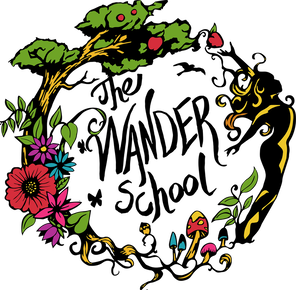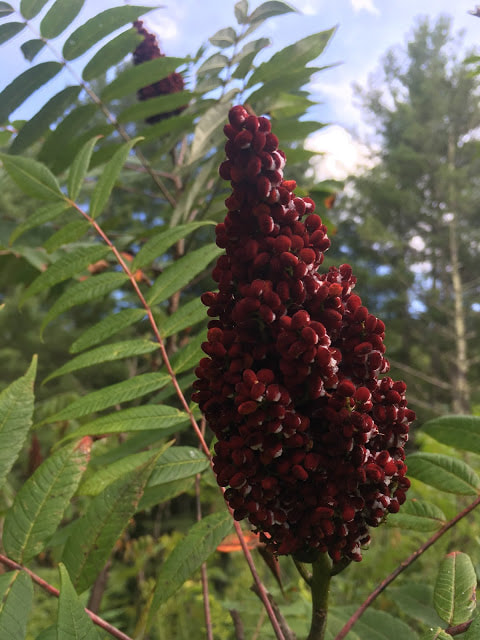|
I totally <3 sumac! Its brilliant red torches on the side of the road inspire love (though that is not the best place to harvest from). I actually included it in a blog this time last year that focused more on the how-to's of foraging, and identification of the different species. You can find it here: Plant Walk: Elderberries, Sumac, and Wild Grapes.
There are several species of edible sumac, including: smooth (Rhus glabra), staghorn (the really fuzzy ones) (Rhus typhina), and winged (Rhus copallinum). Yes, they are related to poison ivy and poison sumac. The edible sumacs have red berries. The toxic ones have white berries and only grow in very marshy areas. In most places, they're so rare, that I've never actually seen them in person. The edible berries are high in vitamin C. They can be steeped in water in the fridge overnight for a tasty "pink lemonade" drink with a little sweetener added. I like to add sumac to my elderberry syrup for a super high vitamin C tonic. This year I tried a new way to eat sumac berries, one I've been wanting to experiment with for awhile: ground, as part of the za'atar middle eastern spice blend. The word za'atar actually comes from a specific species of Mediterranean oregano used in the blend. Here's a recipe for a traditional style za'atar. I tried something similar to that first, then I got a little wild (nice pun, huh???), and made up my own recipe from foraged ingredients. I'm excited to get to share the finished product with you. If you don't have all the ingredients, just do a little substitution and experimentation of your own (and make sure to share it in the comment section below!). WILD ZA'ATAR RECIPE: 1/8 c ground sumac berries 1/8 c ground bee balm (Monarda didyma, or experiment with other wild Monardas or wild mints) 1/8 c stinging or wood nettle (Urtica dioica or Laportea canadensis) 1/2 TBsp salt of choice, or to taste There's no need to go to all the trouble of scraping the red coating off the berries and discarding the seed. Just make sure the berries are ground very fine, so you don't accidentally chomp down on a hard seed. A coffee grinder works really well for this. After the sumac is ground, you can throw the other herbs in the grinder, and grind them all together. Then, mix in the salt by hand. You can mix a little salt in at a time, and taste it along the way. It's always easier to add than subtract. Personally, my favorite ways to eat za'atar are on top of popcorn, hummus, or toast with avocado. If you need suggestions for what to do with your za'atar, this article has some good ones. Enjoy your wild cooking and let me know how it turns out by leaving a comment below.
0 Comments
|
Want to help us continue to do this important work |



 RSS Feed
RSS Feed